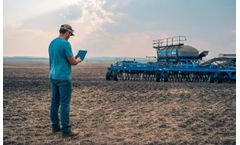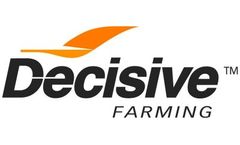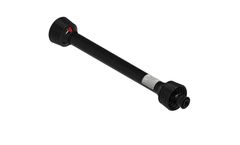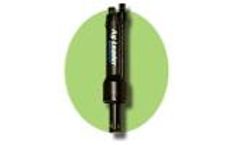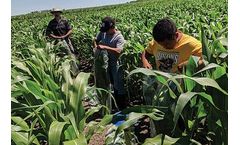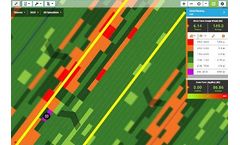Seed Rows Articles & Analysis: Older
17 articles found
Placing fertilizer within the seed row has been long-standing practice for many farmers across the prairies. ...
During drought or dry conditions, salinity and pH levels can change quickly in the soil. While the forecast shouldn’t entirely dictate how you manage your farm, understanding and performing the best farming practices when adding seed-placed nutrients can help save your yields when the rain fails to ...
Planters and Seeders Planters and seeders are used to plant seeds on rows across fields. The planter or the seeder operates on the tractor's PTO shaft which rotates the belts and gears that distribute seeds. ...
Spring planting season in the Midwest is only a few months away. As we get closer to that go date, you likely are thinking through ways you can improve your performance from last year. Planter technology is one of the smartest investments you can make. But with several options, which one is right for you and your farm? At Ag Leader, we offer four solutions that can help improve your ...
Real-Time Technology Can Impact Decision Making On-Farm And Across Regional Landscapes. Soil moisture is not only important for crop production, input decisions and yield outcomes – it is an important determinant of runoff volume, flood risk and greenhouse gas emissions from agriculture soil, such as nitrous oxide (N2O). Advancements in moisture monitoring and forecasting, along with the ...
It is no secret that ground conditions and tillage practices present different challenges for growers during planting season. Those who practice no-till with cover crops can have the most difficult environments for planters when it comes to seed placement - specifically seed depth. Time and again our TechTrials reveal that no matter the farming practices, or ground conditions seed depth makes or ...
Pattison Liquid Systems has been developing and supplying the liquid fertilizer application market with distribution kits for over 40 years. From our fixed orifice systems to our variable rate application systems we have the kit required for todays seeding equipment. See our options ...
A tungsten tipped, depth adjustable twin row (or optional single chute) seed placement coulter capable of handling a wide variety of seeds then follows placing the seed. Covering discs follow and these simply re-direct soil over the seed before the final press wheels just firm the soil over the ...
Getting the seed in the ground perfectly is your best chance for having a bumper crop year, making planter technology one of the smartest investments you can make right now. But with several options, which one is right for you and your farm? Here’s a candid look at the pros and cons of ...
In special designed pot the slurries and mineral reference treatments were banded next to the seed row. Plants were harvested on nine dates with 4-6 days interval and an exponential growth function was fitted to the recordings. ...
Seed Rows Have you wanted the ability to select your rate by row? With the new Seed Row feature, you can now select which rows you want each rate group to control. ...
Using 10 of these accessions, our objectives were (i) to relate seed yield and yield components in spaced plants to yield in row-seeded plots, (ii) to link yield to growth and development factors, and (iii) to determine variation for seed production factors among accessions. Seed yield, seeds per ...
Outcrossing (OC) during the initial stages of spring wheat (Triticum aestivum L.) breeder seed development ('head-rowing') may lead to off-types appearing in later generations of pedigreed seed. The objective of this research project was to measure OC in a simulated short (1.3 m) breeder row nursery of spring wheat. ...
Merr.] (cv. Hutcheson) as a control. Seeds were inoculated and planted (60-cm row spacing) annually in mid-June 2004 through 2006. Seeding rates were varied to achieve 10 seeds m–1 row length. Grain was harvested at the end of growing seasons (90–120 d since planting), and grain samples were ground (1.0 mm) and ...
For 76-cm rows, equivalent yields for solid and skip-rows and seed, technology, and harvest cost savings were enough to justify skip-rows. Technology and harvest costs did not vary with planting configuration for 25-cm rows, but seed cost savings and equivalent yields were enough to justify ...
Planting date and seeding rate are agronomic decisions that producers can use to maximize soybean [Glycine max (L) Merr.] seed yield and economic return. ...
Three field experiments replicated in three environments were conducted to evaluate the following factors: (i) seeding date (mid-May, early-June, and mid-June) and cultivar (K432, K593, and Plainsman); (ii) row spacing (38, 58, and 76 cm) and seeding rate (1, 2, and 4 kg ha–1), and (iii) N fertilization rate (0, 50, 100, 150, and 200 kg N ha–1) ...

